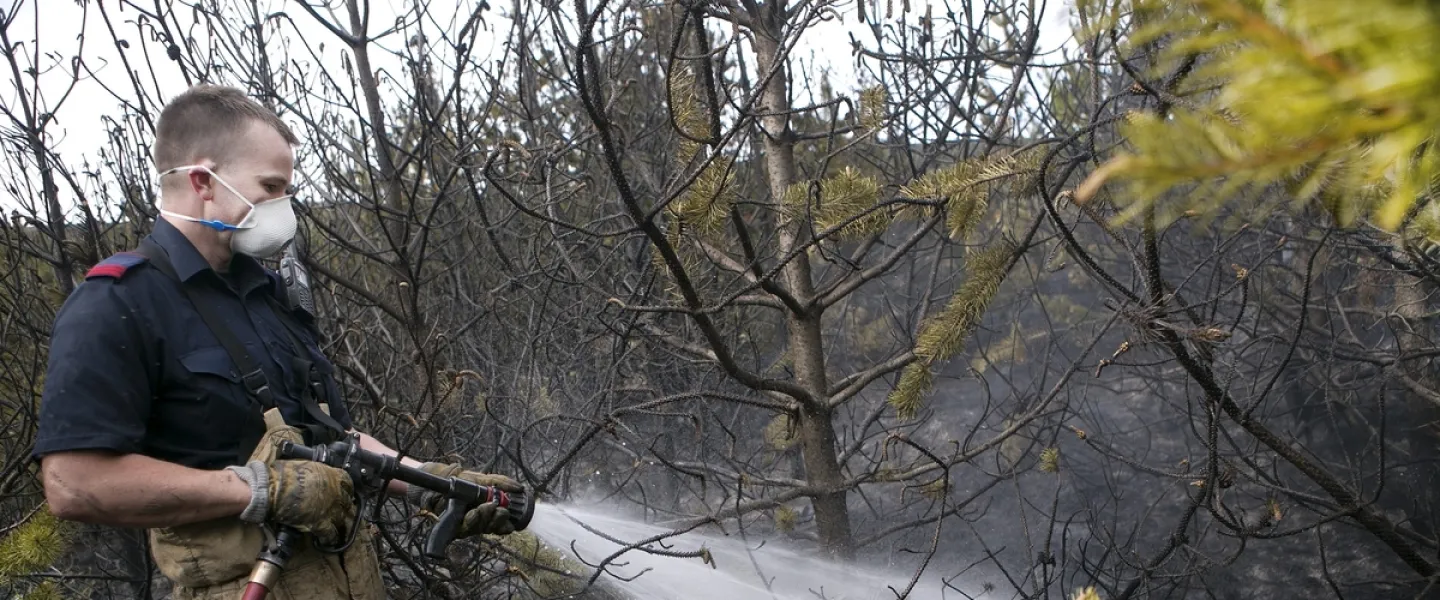
The vital knowledge created at the University of Iceland helps our society to tackle diverse challenges. These challenges include environmental and climate changes and natural disasters, as well as a variety of threats to human health and well-being, as it says in the Strategy for the University, UI26. Universities are sources of knowledge that play a key role in identifying solutions to the challenges outlined in the United Nations Sustainable Development Goals, the SDGs.
Anyone who follows the news will have noticed an increase in the frequency of wildfires that threaten human lives and health, as well as damaging the environment, ecosystems and human infrastructure. Even in Iceland, wildfires have become a problem in a way that few people would have predicted.
Many institutions are now thinking more seriously about the risk of wildfires. For example, the Department of Civil Protection website recognises the danger, explaining that: "Due to a warming climate, changes in agriculture and increased forestation, there is a heightened risk of wildfires. It is important that fire safety and planning authorities start giving serious consideration to the risk of wildfires in terms of path building, ditches, fire control zones, access to water and forest management."
The Icelandic Institute of Natural History website contains a non-exhaustive overview of past wildfires, covering the period from 2006 until the present day. It includes information on the extent of the burned area in hectares and the nature of the terrain. Last year, for example, there were four serious wildfires that occurred in forested areas, as well as areas vegetated mainly by moss, heather, grass and lupin. The total burned area was around 100 hectares. The largest fire occurred in the populat recreational are Heiðmörk, near Reykjavík, where an old birch forest was damaged or destroyed and almost 60 hectares burned.
Climate change will cause more frequent wildfires
"With the way our climate is changing, we can expect to see more frequent wildfires and longer wildfire seasons. Wildfires are now occurring further north. Recently we have seen wildfires in Siberia, Greenland and Alaska, for example," says Þröstur Þorsteinsson, professor of environment and natural resources at UI.
He is now working on a study that aims to find ways to evaluate the risk of wildfires in various areas of Iceland, map flammable vegetation and vulnerability to damage, and create models to predict the potential spread and severity of wildfires in different areas.
Processing data about wildfires in Iceland, which is part of Þröstur's study, shows that serious summer wildfires in Iceland are a fairly new phenomenon. "An emergency response plan has also been designed for Skorradalur, partially based on the work we've been doing for this project," says Þröstur. Skorradalur has often been in the news in recent years when the Department of Civil Protection declares alert phases due to the risk of wildfires. The valley, which is a popular area for holiday cabins, is forested from the lake shore to the highest ridges and can only be accessed by a single road.
Þröstur's research has increasingly focused on air quality, since it is such a vital factor in the health of entire ecosystems. "This includes public health, which may be affected by wildfires, sandstorms, power plants that release greenhouse gases and toxic gases like hydrogen sulphide, and traffic pollution," explains Þröstur.



